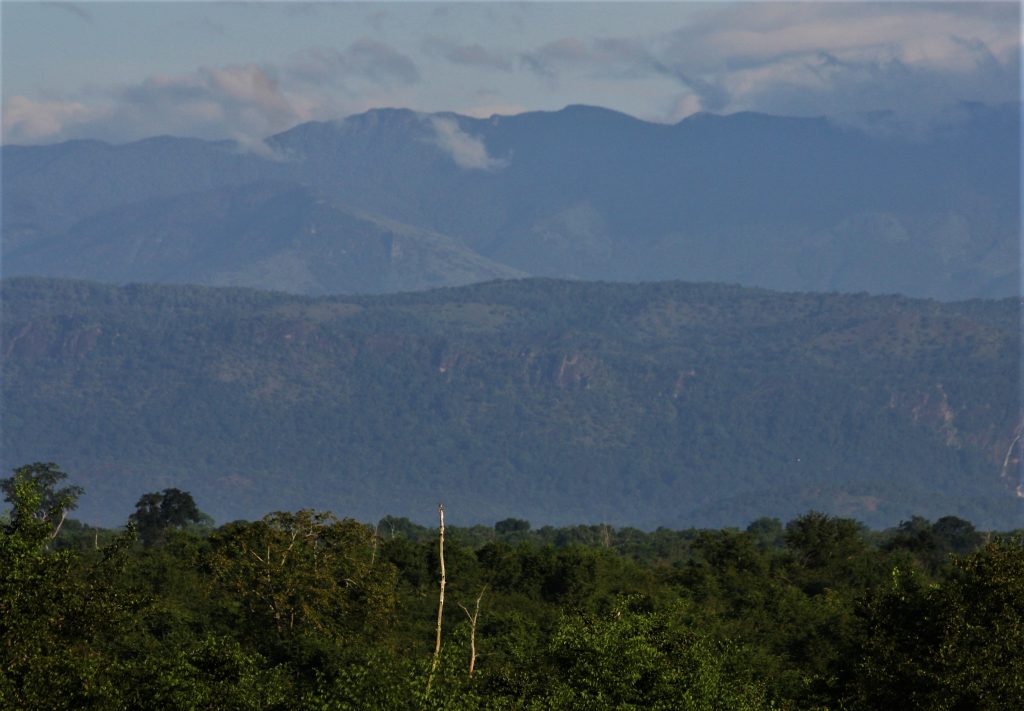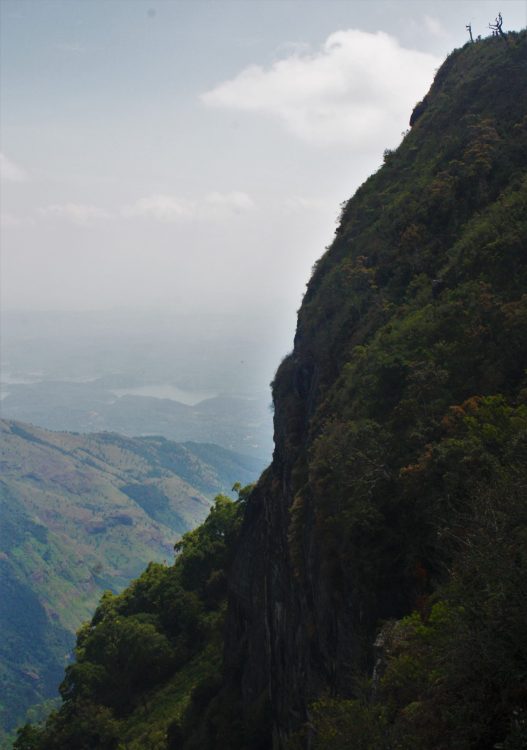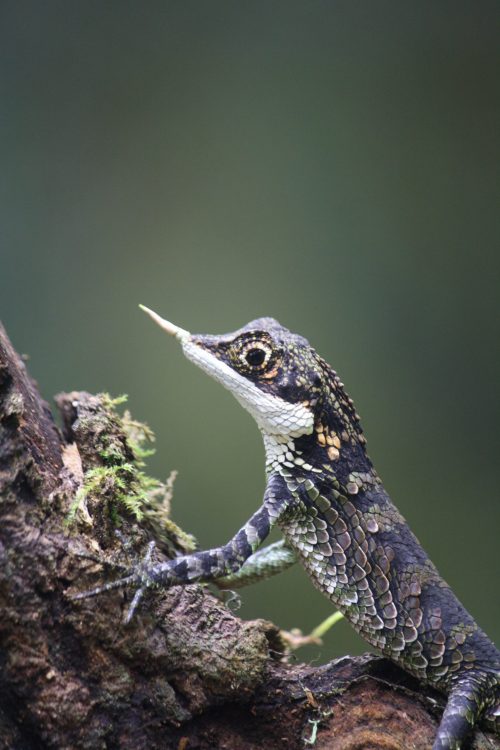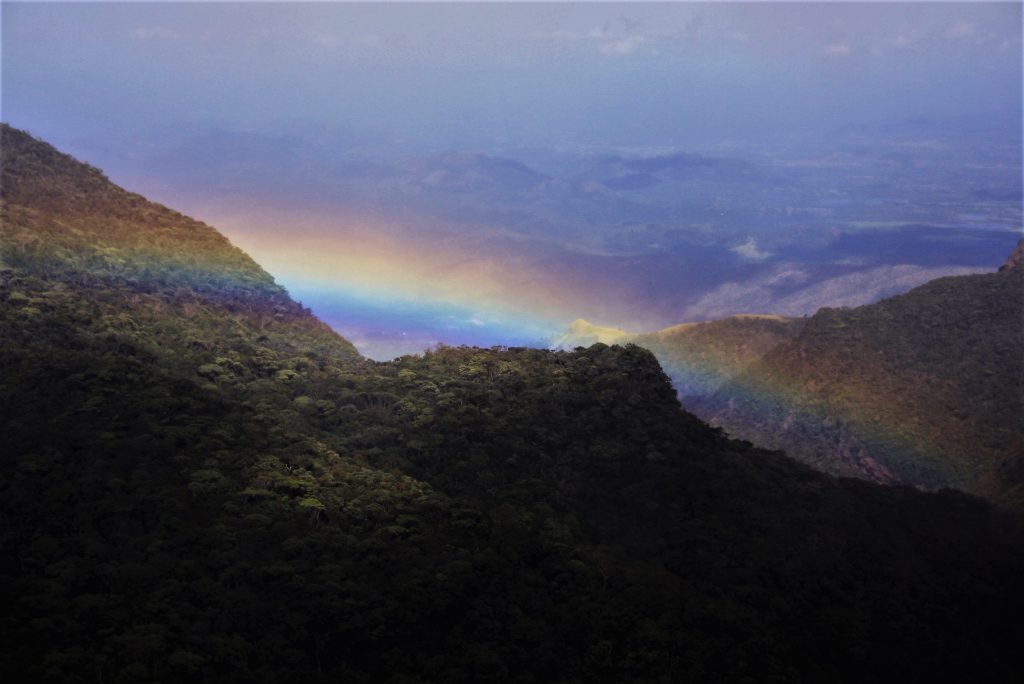Sri Lanka: a land nonpareil
What is the secret behind this remarkable island?
Sandun J. Perera, PhD
Sri Lanka lies in the Indian Ocean as a continental island, sharing the same continental shelf of the Deccan plate with India. The island is located immediately south-east of India, separated from the mainland through the narrow and shallow Palk Strait, making it the last landmass at its longitude until Antarctica in the south.
The recognition of Sri Lanka and the adjoining wet forests of India as a globally unique biogeographic entity goes back to the writings of Alfred Russel Wallace. Wallace identified the Ceylonese sub-region of the Oriental region of global zoogeography, which later got refined to the Cinghalese subregion combining the Malabag Ghats with southern Ceylon (Wallace,1876; Blanford, 1901).
Such delimitations have subsequently given rise to the Western Ghats and Sri Lanka biodiversity hotspot, among the 36 such global priority areas for biodiversity conservation, due to their concentration of the most endemic assemblages of fauna and flora under the utmost danger of being lost in the near future owing directly to human development (Myers et al., 2000, Mittermeier et al., 2004).
Despite the similarities of ecosystem attributes shared by the two landmasses of this biodiversity hotspot, the degree of uniqueness of biota in the island of Sri Lanka has only been recognized recently with the advent of molecular studies. Especially amongst groups of organisms with less dispersal ability and some remarkable groups of plants that show unparalleled degrees of endemism within the island (Ashton & Gunatilleke, 1987; Meegaskumbura et al., 2002; Bossuyt et al., 2004; Gunatilleke et al., 2017).
Sri Lanka is a relatively large island and harbours an exceptionally high diversity and endemism of fauna and flora for its size. Although it is common to see high endemism in isolated lands, their biota is usually depauperate in diversity. However, the lesser degree of isolation from mainland India together with which Sri Lanka shares her continental shelf, and the hundred-kilometre-wide land bridge that ensued between the two lands at least five times over the last 500,000 years during glaciation events that lowered the sea level. Has meant Sri Lanka experienced intermittent species immigration from the mainland followed by isolation driven speciation within the island, causing an unusual combination of species diversity and endemism (Bossuyt et al., 2004; Meegaskumbura et al., 2019).
Making this picture far more colourful, the northward journey of the Deccan plate, or the land plate carrying India and Sri Lanka from the global south to the equator over the last 250 million years has brought so many different elements of biota into it. For example, the African, Malagasy and Gondwanan elements, which took refuge in the Sri Lankan lands during the massive volcanic eruptions of Deccan traps (Erdelen, 1989). Moreover, geologically recent Himalayan, Malayan and south Indian elements of biota that have flourished in the island have added even more colour (Legge, 1983).
Such a varied assemblage of species trapped in Sri Lanka at least over the last five interglacial periods have undergone rapid insular speciation and radiation influenced mainly by the topographical setup and the climatic variation (Fernando, 1984; Wijesinghe et al., 1993).
The geomorphological evolution of the landmass has resulted in three distinct peneplains (Wadia, 1945), including a wide coastal plain, an interim second peneplain and the ruggedly mountainous and south-central third peneplain, escarpments and inselbergs in between and within each plain and a radial system of perennial rivers dissecting those plains into even smaller land parcels, all supporting isolation of populations driving them into insular endemic speciation events.

Panoramic view on the three distinct peneplains of the island from the south – the photograph is taken from the Udawalawe National Park in the southern lowland plain looking at the two escarpments separating second and third peneplains. ©️ Sandun J. Perera
These patterns have further been shaded into their multiple tones by the two monsoons, the south-west and the north-east, causing varying degrees of rainfall into their respective portions of the island. Thus, making the ever wet to seasonally dry climatic zones including the unique intermediate zone in between and semi-arid sections along the two rain shadows (Wijesinghe et al., 1993).
This remarkable combination of isolation mechanisms together with the intermittent influx of new genes from the mainland have resulted in a very unique setup in Sri Lanka. Where a remarkably rich species diversity has resulted together with high endemism values such as 98% endemism in freshwater crabs, and above 85% among amphibians and land snails (MoMD&E, 2012; MoMD&E,2019).
Further, this evolutionary marvel has resulted in some endemic radiations such as those of direct developing shrub frogs (with no swimming tadpole stage) of the genus Pseudophilautus, rostral scale evolution into a horn among horned lizards of the genus Ceratophora and the unique genus of Stemonoporus within the rain forest Dipterocarp trees, especially along the wet south-western quarter of the island with the highest level of topographic and hence habitat heterogeneity (Meegaskumbura et al., 2002, 2019; Schulte et al., 2002; Gunatilleke et al., 2017).


The evolution of rostral scale into a horn among the lizard genus Ceratophora marks an important insitu radiation endemic to Sri Lanka. Ceratophora stoddartii in the photograph to your right is endemic to the central highlands delimited in south by the World’s End escarpment in the photograph to your left, acting as a vicariant barrier to limit the distribution of this species. ©️ Sandun J. Perera
The above fact has also caused something even more amazing, where some of those species are found as point endemics. Thus, making each of their fine habitat patches the only place for their entire species to survive on the Earth. Hence, making the south-western jungles of the island a crucible of speciation (Gunawardene et al., 2007; Gunatilleke et al., 2017; Meegaskumbura et al., 2019).

Central Highlands of Sri Lanka – home for the highest number of in-situ speciation events within Sri Lanka. ©️ Sandun J. Perera
REFERENCES
* Ashton, P. S., & Gunatilleke, C. V. S. (1987). New light on the plant geography of Ceylon. I. Historical plant geography. Journal of Biogeography, 14, 249-285.
* Blanford, W. T. (1901). The distribution of vertebrate animals in India, Ceylon, and Burma. Philosophical Transactions of the Royal Society of London (B), 194, 335-436.
* Bossuyt, F., Meegaskumbura, M., Beenaerts, N., Gower, D. J., Pethiyagoda, R., Roelants, K., Mannaert, A., Wilkinson, M., Bahir, M. M., Manamendra-Arachchi, K., Ng, P. K. L., Schneider, C. J., Oommen, O. V. & Milinkovitch, M. C. (2004). Local Endemism Within the Western Ghats-Sri Lanka Biodiversity Hotspot. Science, 306(5695), 479. doi:10.1126/science.1100167
* Erdelen, W. (1989). Aspects of the biogeography of Sri Lanka. Forschungen auf Ceylon, 3, 73-100.
* Fernando, C. H. (1984). Ecology and biogeography in Sri Lanka. The Hague: Dr. W. Junk Publishers.
* Gunatilleke, N., Gunatilleke, S., & Ashton, P. S. (2017). South-west Sri Lanka: a floristic refugium in south Asia. Ceylon Journal of Science, 46 (Special Issue), 65-78. doi:10.4038/cjs.v46i5.7454
* Gunawardene, N. R., Daniels, A. E. D., Gunatilleke, I. A. U. N., Gunatilleke, C. V. S., Karunakaran, P. V., Nayak, K. G., Prasad, S., Puyravaud, P., Ramesh, B. R., Subramanian, K. A. & Vasanthy, G. (2007). A brief overview of the Western Ghats Sri Lanka biodiversity hotspot. Current Science, 93(11), 1567-1572.
* Meegaskumbura, M., Bossuyt, F., Pethiyagoda, R., Manamendra-Arachchi, K., Bahir, M., Milinkovitch, M. C., & Schneider, C. J. (2002). Sri Lanka: An Amphibian Hot Spot. Science, 298(5592), 379. doi:10.1126/science.298.5592.379
* Meegaskumbura, M., Senevirathne, G., Manamendra-Arachchi, K., Pethiyagoda, R., Hanken, J., & Schneider, C. J. (2019). Diversification of shrub frogs (Rhacophoridae, Pseudophilautus) in Sri Lanka – Timing and geographic context. Molecular Phylogenetics and Evolution, 132, 14-24. doi:https://doi.org/10.1016/j.ympev.2018.11.004
* Mittermeier, R. A., Robles Gil, P., Hoffmann, M., Pilgrim, J., Brooks, T., Mittermeier, C. G., . . . da Fonseca, G. A. B. (Eds.). (2004). Hotspots revisited: Earth’s biologically richest and most endangered terrestrial ecoregions. Mexico City: CEMEX.
* MoE. (2012). The National Red List 2012 of Sri Lanka; Conservation Status of the Fauna and Flora. Colombo: Ministry of Environment, Sri Lanka.
* MoMD&E. (2019). Biodiversity Profile – Sri Lanka, Sixth National Report to the Convention on Biological Diversity. Colombo: Biodiversity Secretariat, Ministry of Mahaweli Development and Environment, Sri Lanka.
* Myers, N., Mittermeier, R. A., Mittermeier, C. G., da Fonseca, G. A. B., & Kent, J. (2000). Biodiversity hotspots for conservation priorities. Nature, 403(6772), 853-858.
* Schulte, J. A., Macey, J. R., Pethiyagoda, R., & Larson, A. (2002). Rostral Horn Evolution among Agamid Lizards of the Genus Ceratophora Endemic to Sri Lanka. Molecular Phylogenetics and Evolution, 22(1), 111-117. doi:https://doi.org/10.1006/mpev.2001.1041
* Legge, W. V. ( 1983). A History of the Birds of Ceylon, 2nd edition (containing additional introductory materials). Colombo: Tisara Publications Ltd.
* Wadia, D. N. (1945). The three superposed peneplains of Ceylon. Ceylon Department of Mineralogy, Professional Paper, 1, 25-38.
* Wallace, A. R. (1876). The geographical distribution of animals. (2 vols). London: Macmillan.
* Wijesinghe, L. C. A. d. S., Gunatilleke, I. A. U. N., Jayawardana, S. D. G., Kotagama, S. W., & Gunatilleke, C. V. S. (1993). Biological Conservation in Sri Lanka. A National Status Report. Colombo: IUCN Sri Lanka.

